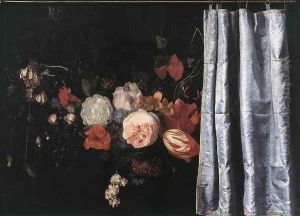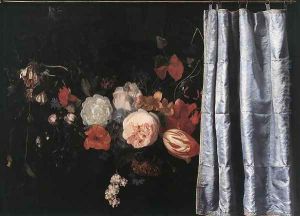Adrian Van Der Spelt Paintings
Adriaen van der Spelt was a Dutch Golden Age flower painter whose works are less widely known today but are nevertheless a part of the rich tapestry of 17th-century Dutch art. Born in 1630 in Gouda, in the Dutch Republic, van der Spelt's early life and artistic training are not well-documented, which is the case with many artists of that period.
What is known is that van der Spelt specialized in still-life paintings, particularly flower pieces, which were a popular genre in the Dutch Golden Age. This was a time when the Dutch Republic was experiencing unprecedented economic prosperity and when there was a high demand for art among the growing middle and upper classes. His works often featured arrangements of flowers in vases, showing a keen observation of detail and a talent for capturing the texture and delicacy of petals and leaves.
Though van der Spelt’s work was appreciated in his time, he has not achieved the same lasting fame as some of his contemporaries like Jan Davidsz. de Heem or Willem van Aelst. Nonetheless, his paintings can be seen as a reflection of the 17th-century Dutch fascination with naturalism and the scientific study of the natural world, which was also evident in the era's botanical gardens and the interest in botany and horticulture.
Van der Spelt's artistic output was not limited to flower paintings. He also collaborated with other artists, such as Frans van Mieris the Elder. One of his most famous collaborative works is a trompe-l'oeil still life with Frans van Mieris, where van der Spelt painted the floral arrangement and van Mieris painted the figure. This painting is a testament to van der Spelt's skill, as his contribution seamlessly blends with the work of van Mieris, creating an illusionistic and compelling composition.
Adriaen van der Spelt's death is recorded as having occurred in 1673, although the location and circumstances of his death are not well-known. Despite the scarcity of biographical details, van der Spelt's extant works continue to provide insight into the genre of flower painting in the Dutch Golden Age and attest to his abilities as a painter who could capture the transient beauty of flowers with permanence on canvas.

